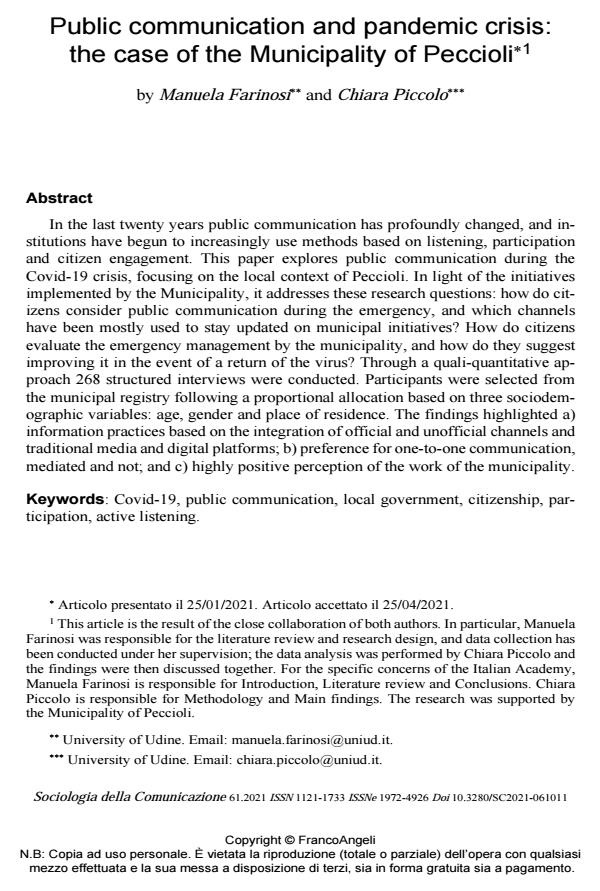Public communication and pandemic crisis: the case of the Municipality of Peccioli
Journal title SOCIOLOGIA DELLA COMUNICAZIONE
Author/s Manuela Farinosi, Chiara Piccolo
Publishing Year 2021 Issue 2021/61
Language English Pages 10 P. 159-168 File size 218 KB
DOI 10.3280/SC2021-061011
DOI is like a bar code for intellectual property: to have more infomation
click here
Below, you can see the article first page
If you want to buy this article in PDF format, you can do it, following the instructions to buy download credits

FrancoAngeli is member of Publishers International Linking Association, Inc (PILA), a not-for-profit association which run the CrossRef service enabling links to and from online scholarly content.
In the last twenty years public communication has profoundly changed, and institutions have begun to increasingly use methods based on listening, participa-tion and citizen engagement. This paper explores public communication during the Covid-19 crisis, focusing on the local context of Peccioli. In light of the initiatives implemented by the Municipality, it addresses these research questions: how do citizens consider public communication during the emergency, and which channels have been mostly used to stay updated on municipal initiatives? How do citizens evaluate the emergency management by the municipality, and how do they sug-gest improving it in the event of a return of the virus? Through a quali-quantitative approach 268 structured interviews were conducted. Participants were selected from the municipal registry following a proportional allocation based on three so-ciodemographic variables: age, gender and place of residence. The findings high-lighted a) information practices based on the integration of official and unofficial channels and traditional media and digital platforms; b) preference for one-to-one communication, mediated and not; and c) highly positive perception of the work of the municipality.
Keywords: Covid-19, public communication, local government, citizenship, par-ticipation, active listening.
Manuela Farinosi, Chiara Piccolo, Public communication and pandemic crisis: the case of the Municipality of Peccioli in "SOCIOLOGIA DELLA COMUNICAZIONE " 61/2021, pp 159-168, DOI: 10.3280/SC2021-061011